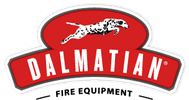Step One
Dalmatian’s business is renewal and rejuvenation. Our business takes items that have little or no use when they arrive, and add value to capture the remaining service life. The advantage Dalmatian has at the outset is that the products themselves are designed to withstand massive abuse. They are designed to be drug through mud and fire. Rode hard and put away wet. They are handled in emergencies when the firemen are under stress and not worried about their equipment. The equipment needs to be trustworthy through all of it. And through it all, it must perform the most critical of all functions: provide the breath of life. The original design of these packs is stunningly robust. It’s a great starting point for our process.
Receiving
The first step of the process in refurbishing SCBAs is a formal receiving station. Receiving has four key objectives: to identify, to evaluate, standardize configuration, and to store the product. Our philosophy is that everything that ends up on the shelf has to be registered, traceable, and known to be repairable.
The identification process is the most critical. We need to know the model, options, condition and status of prior repairs. A lot of times older packs have been repaired over the years by people who are often willing to compromise the configurations. Components may have been used that aren’t meant for the pack. Receiving is able to identify these parts, remove them, and replace them with those meant to be used by the manufacturer on the pack at that date.
The product is now in a standard configuration. We do this in a way that gives the packs the highest and best use that the pack is capable of having. This isn’t a full repair cycle, but it does get the pack into a state where it can be later repaired and we know that the components are functioning. The basic test at this level is to check that air goes in and out of the pack and that the alarms, HUD sensors and receivers are working.
Once the pack configuration is established it is time to store the pack. Dalmatian typically has 5,000-8,000 packs in storage at any given time in one of our two facilities. We also have 6,000-10,000 cylinders in inventory at any given time. To maintain the configurations of five different brands over a 20 year history takes a lot of inventory, and Dalmatian has it. This is our biggest value. It’s no small task to keep track of that large of an inventory, but having a formal system ensures reliability.

